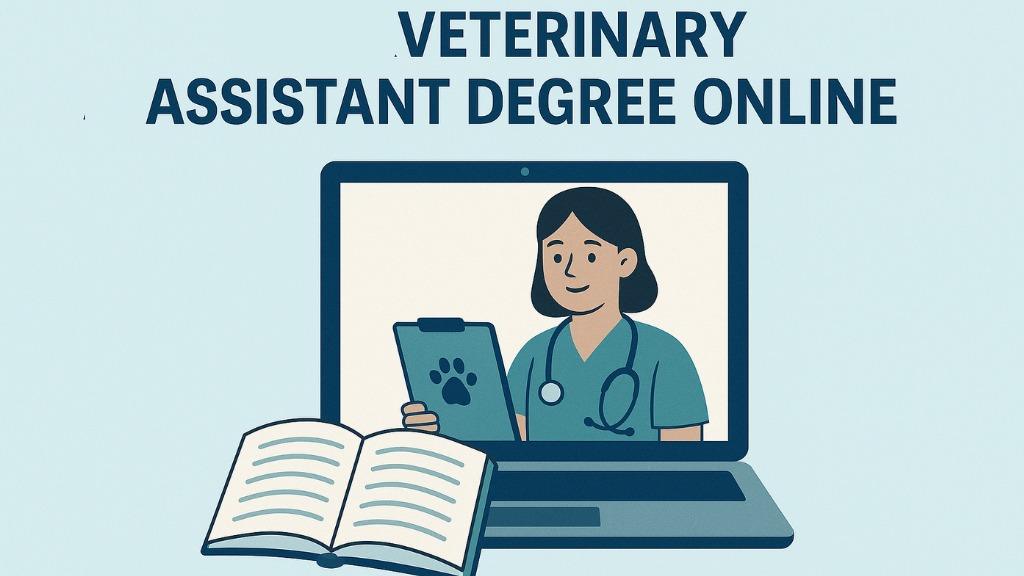Definitely. In view of rapid digital advancement, animal care aspirants are networked to their homes and frog-leapt into meaningful careers. It is an online program not only to secure a degree as a vet assistant at their convenience, as compared to other courses, but also an accredited and valid way to enter the flourishing animal healthcare industry.
In this article, we will discuss why online degrees for veterinary assistants are paramount, their concrete benefits, how one can get started, what to expect, and how to capitalize on one’s investment in the field.
Why a Veterinary Assistant Degree Online Matters
1. High Demand for Animal Care Professionals
The U.S. Bureau of Labor Statistics expects 20% job growth in the area of veterinary assistants from 2022 until 2032, considerably faster than the average growth for all occupations.
2. Accessible Education for All
An online program opens doors for students living in rural areas and those with full-time jobs to obtain an education without the need to relocate or lose income.
3. Animal Care Starts with You
Veterinary assistants are the unsung heroes of the clinic. They ensure animals are comfortable, safe, and healthy, making a direct impact on their well-being.
Key Benefits of Online Veterinary Assistant Programs
- Flexibility: Study at your own pace around your work or personal schedule.
- Affordability: Lower tuition compared to in-person programs, with fewer transportation and material costs.
- Accreditation Options: Programs like those from Penn Foster, Ashworth College, and San Juan College offer accredited training.
- Career-Focused Curriculum: Learn hands-on skills like handling animals, assisting in surgery prep, administering medications, and record keeping.
- Externship Opportunities: Many online programs partner with local clinics for real-world experience.
Your Guide to Getting a Veterinary Assistant Degree
Step 1: Choose the Right Program
Look for schools that are accredited and with an appropriate balance between theory and practical training. Such as-
- Penn Foster’s NAVTA-approved program
- San Juan College’s AVMA-accredited Veterinary Technology track
- Ashworth College’s flexible yet genuine approach toward preparing students for their careers
Step 2: Enroll and Begin Coursework
Main subjects include:
- Animal Anatomy and Physiology
- Nutrition and Husbandry
- Clinical Procedures
- Veterinary Office Practices
Step 3: Externship
Externships make for the great hands-on learning experience. Most schools also assist students with placement in a local veterinary clinic or animal hospital.
Step 4: Graduate and Get Certified
Working toward an Approved Veterinary Assistant (AVA) qualification through the National Association of Veterinary Technicians in America (NAVTA) is a good option, even though it is not often required.
Real-World Example: From Animal Shelter Volunteer to Veterinary Assistant
Jordan Peters is one of the two thousand animal volunteers who successfully transitioned to being a full-time veterinary assistant after two years of volunteering. In all aspects, Jordan enrolled in an online Penn Foster veterinary assistant program.
“It let me volunteer and do part-time work while studying. Externship was most rewarding; now I work there full-time.”
Real Actionable Tips for Online Veterinary Assistant Students
- Set a Weekly Study Schedule: Treat your school like a job.
- Join Forums or Facebook Groups: Mentorship from other students can support you.
- Keep Records of Your Learning: Create a portfolio during your externship.
- Have Questions: Talk to your instructors or mentors for guidance.
- Be Current with Trends: Watch for AVMA and NAVTA news for those updates.
Typical Mistakes to Avoid
1. Skipping the Externship
Real-world experience gained cannot be viewed as optional.
2. Registering for Non-Accredited Programs
Make sure what you studied could be credited in employers’ eyes.
3. Failing to Plan for Finances
Know about tuition and payment options before signing up to understand what kind of jobs might be available.
4. Poor Time Management
Online courses don’t mean easy. Structure and discipline are essential.
Future Trends in Veterinary Assistant Careers
🤝 Telemedicine in Veterinary Care
Many of the consultancy and distant observation functions will see an individual’s entry in this new regime.
🚀 Increased Expected Specialized Clinics
Increased demand for opportunities in oncology, physical therapy, or exotic animal care.
🌎 Global Animal Welfare Programs
Train online: These assistants could contribute to NGOs as well as wildlife programs across all parts of the globe.
Start Your Journey into Animal Healthcare Today.
Veterinary assistant degrees online equip a prospective animal caretaker with flexible, cheaper, and even advantageous steps into the profession. With careful planning and diligent effort, your passion for animals will become a lifelong career.
Key Takeaways:
- The pet assistant profession is experiencing rapid transformation.
- Highly flexible, high-quality, accredited, distance-learning programs.
- Good hands-on externships and certifications make you job-ready.
Ready to make a difference? Discover online veterinary assistant programs and begin your first step down a career path paved with compassion, care, and purpose.




